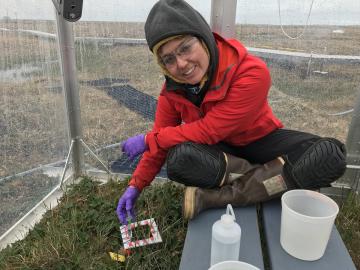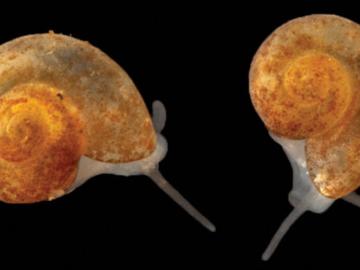
Filter News
Area of Research
- (-) Computer Science (1)
- (-) Energy Science (55)
- (-) Fusion Energy (9)
- (-) National Security (10)
- (-) Nuclear Systems Modeling, Simulation and Validation (1)
- Advanced Manufacturing (7)
- Biological Systems (1)
- Biology and Environment (83)
- Biology and Soft Matter (1)
- Computational Biology (2)
- Computational Engineering (1)
- Fusion and Fission (19)
- Isotopes (9)
- Materials (58)
- Materials for Computing (11)
- Mathematics (1)
- Neutron Science (79)
- Nuclear Science and Technology (30)
- Supercomputing (45)
- Transportation Systems (1)
News Type
News Topics
- (-) Biomedical (4)
- (-) Environment (37)
- (-) Materials Science (17)
- (-) Neutron Science (4)
- (-) Nuclear Energy (15)
- (-) Space Exploration (3)
- 3-D Printing/Advanced Manufacturing (47)
- Advanced Reactors (9)
- Artificial Intelligence (13)
- Big Data (10)
- Bioenergy (13)
- Biology (8)
- Biotechnology (3)
- Buildings (24)
- Chemical Sciences (4)
- Clean Water (7)
- Composites (11)
- Computer Science (36)
- Coronavirus (9)
- Critical Materials (4)
- Cybersecurity (14)
- Energy Storage (41)
- Fossil Energy (1)
- Frontier (1)
- Fusion (11)
- Grid (33)
- High-Performance Computing (7)
- Hydropower (3)
- Machine Learning (14)
- Materials (19)
- Mathematics (2)
- Mercury (2)
- Microelectronics (1)
- Microscopy (4)
- Nanotechnology (4)
- National Security (24)
- Partnerships (5)
- Polymers (6)
- Quantum Science (3)
- Security (9)
- Simulation (2)
- Statistics (1)
- Summit (5)
- Transportation (44)
Media Contacts

From materials science and earth system modeling to quantum information science and cybersecurity, experts in many fields run simulations and conduct experiments to collect the abundance of data necessary for scientific progress.

Researchers at Oak Ridge National Laboratory developed a method that uses machine learning to predict seasonal fire risk in Africa, where half of the world’s wildfire-related carbon emissions originate.

Oak Ridge National Laboratory scientists seeking the source of charge loss in lithium-ion batteries demonstrated that coupling a thin-film cathode with a solid electrolyte is a rapid way to determine the root cause.

Ada Sedova’s journey to Oak Ridge National Laboratory has taken her on the path from pre-med studies in college to an accelerated graduate career in mathematics and biophysics and now to the intersection of computational science and biology

Temperatures hotter than the center of the sun. Magnetic fields hundreds of thousands of times stronger than the earth’s. Neutrons energetic enough to change the structure of a material entirely.

Research by an international team led by Duke University and the Department of Energy’s Oak Ridge National Laboratory scientists could speed the way to safer rechargeable batteries for consumer electronics such as laptops and cellphones.
An international team of scientists found that rules governing plant growth hold true even at the edges of the world in the Arctic tundra.

Oak Ridge National Laboratory researchers have developed a thin film, highly conductive solid-state electrolyte made of a polymer and ceramic-based composite for lithium metal batteries.

While some of her earth system modeling colleagues at ORNL face challenges such as processor allocation or debugging code, Verity Salmon prepares for mosquito swarms and the possibility of grizzly bears.

Sometimes conducting big science means discovering a species not much larger than a grain of sand.


